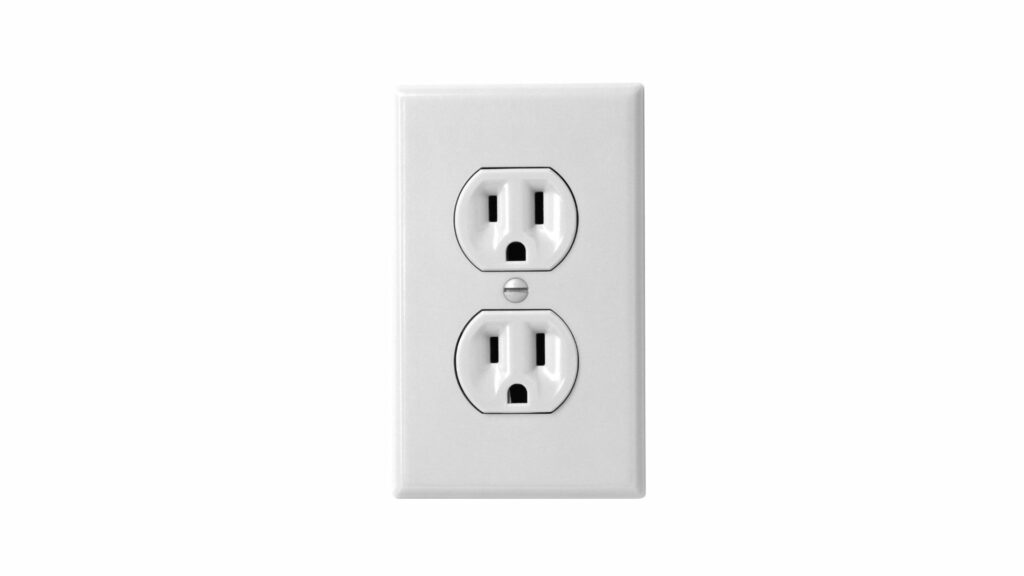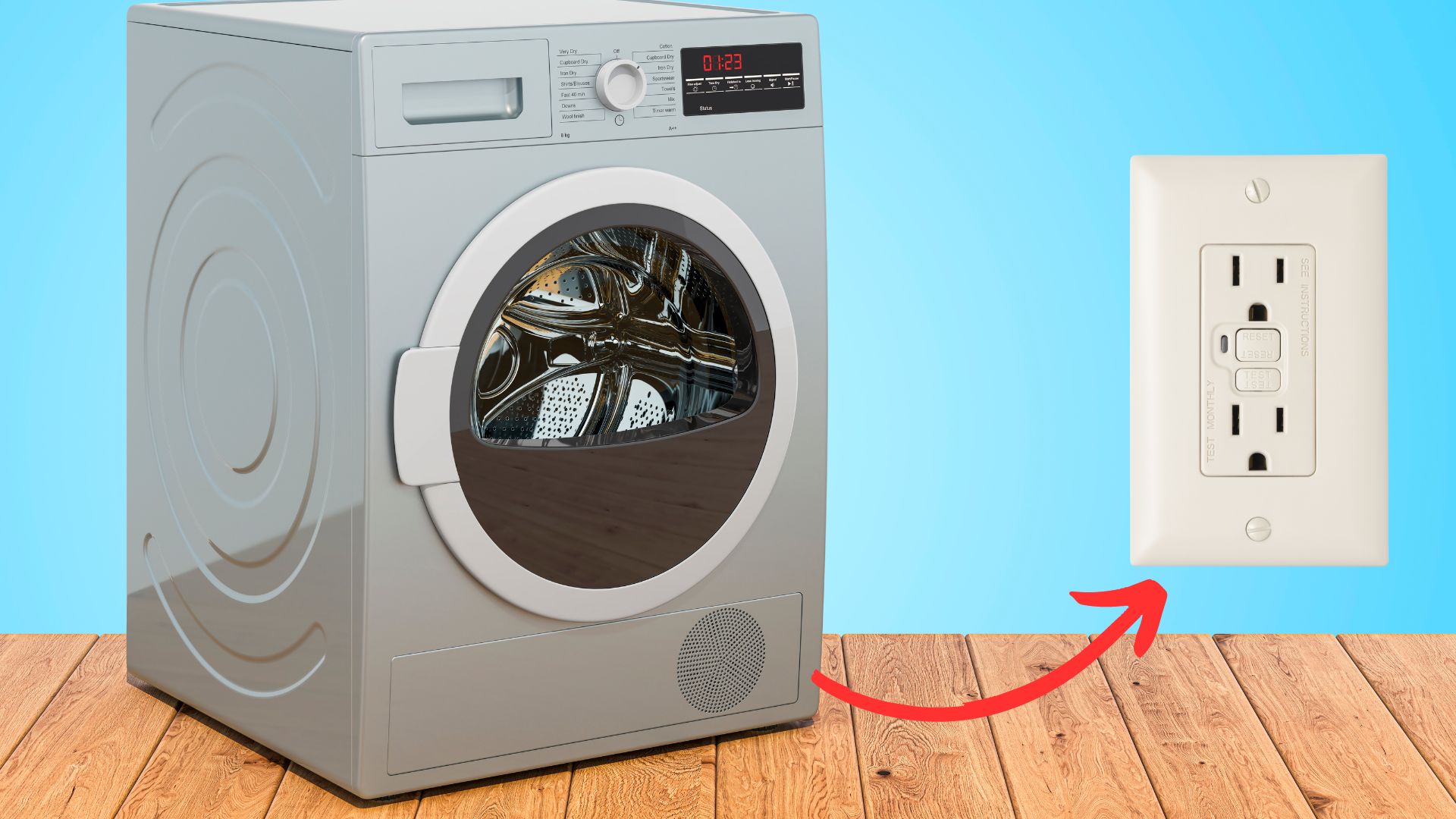GFCIs respond to ground faults. They look at the incoming and outgoing current, tripping when they notice a difference between the two. An imbalance in the incoming and outgoing current occurs when the current escapes its predetermined path to flow through other conductors, including water and the human body.
Therefore, you want the GFCI to trip in such cases because it prevents ground faults from electrocuting you. To determine whether the dryer needs a GFCI, you have to ask yourself an important question. Where do GFCIs typically appear? You will see them in the following areas:
1). Kitchen
Kitchen appliances are dangerous because they use a lot of power, and yet, they neighbor water. They need GFCI protection to prevent electrocution. Contractors pay close attention to the sink.
You must arm every receptacle within six feet of the sink’s edge with GFCI technology. This also applies to outlets beneath the sink. For instance, receptacles that serve the dishwasher and garbage disposal.
2). Bathroom
The bathrooms are wet. They expose appliances to excess moisture. Therefore, GFCIs are vital in this location.
3). Laundry Area
Laundry rooms are similar to bathrooms. They expose appliances to water. A GFCI in the laundry room will prevent ground faults.
4). Garage
People use garages to house everything from refrigerators to power tools for their makeshift workshops. This area requires a GFCI to prevent accidents.
5). Basement
Initially, homeowners would only install GFCIs in unfinished basements. But the rules eventually expanded to include all basements because these areas are damp. They also tend to flood. Therefore, every appliance in your basement (Finished or unfinished) requires a GFCI.
6). Outside
Exterior receptacles are exposed to extreme weather conditions, including rain and snow. A GFCI will prevent them from electrocuting you once moisture inevitably infiltrates the outlets.
The code in your area may include additional sections of the house. But most homeowners will only concern themselves with the locations mentioned above while installing GFCI protection. But what does this say about the dryer? These are the conclusions you will reach:
- People don’t keep dryers in the kitchen. Therefore, the rules governing the use of GFCIs for appliances beneath or within six feet of the sink’s edge don’t matter here.
- You can ignore the bathroom as well. Consumers don’t install dryers in bathrooms.
- The laundry room is your primary focus because it houses washers and dryers, and laundry room appliances require GFCIs.
- The garage is another significant consideration because many homeowners use it as their laundry room. A dryer in a garage needs a GFCI.
- If you do your laundry in the basement, the same rules apply. Basement receptacles must be GFCI-protected.
Therefore, you can conclude that a dryer needs a GFCI.
What Does The Law Say About Dryer GFCI?
Some homeowners hate GFCI outlets. And initially, they relied on two loopholes in the NEC to avoid the technology:
- According to Electrical License Renewal, the National Electric Code previously called for the application of GFCI protection on 15A and 20A 125V receptacles. This helped many consumers because their dryers ran on 240V systems.
- Previous versions of the NEC expected contractors to add GFCI technology to unfinished basements. Therefore, consumers with dryers in finished basements would use ordinary outlets instead of GFCI receptacles.
But those loopholes won’t work today. The National Fire Protection Association Journal has highlighted two vital changes introduced in the NEC’s 2020 edition:
- The NEC wants contractors to add GFCI protection to 125V and 250V receptacles.
- The GFCI rules apply to entire basements, regardless of whether they are finished or not.
The NEC based these changes on recent deaths. For instance, one child suffered a shock while crawling behind a dryer. Therefore, it has become more difficult, if not impossible, to avoid GFCIs for dryers.
And if you find a loophole in the NEC’s regulations, Jade Learning wants you to check the manufacturer’s instructions before you celebrate. An inspector will penalize you if you ignore the manufacturer’s instructions to connect the dryer to a GFCI receptacle.
This matters to homeowners who constructed their laundry rooms and basements before the NEC mandated the use of GFCI protection in those areas. The authorities don’t expect you to alter an older home to meet the demands of new regulations. The new rules only apply if you remodel the laundry room.
What Amp GFCI Do I Need For A Dryer?

An outlet’s amperage will match the circuit’s rating. In other words, if your dryer can run on a 20A circuit, it can also run on the outlets connected to that circuit. Therefore, you should start by installing a suitably sized circuit breaker.
The GFCI outlet should match the rating of the outlet you want to replace. The circuit breaker’s size will depend on the dryer’s ampacity. The circuit breaker’s size should exceed the dryer’s rating.
Why Does My Dryer Tripping GFCI?
What kind of configuration do you have? A three-wire configuration includes two hots and a neutral. If you inspect the dryer, you will see a jumper bonding the chassis to the neutral. This allows some current to return to the panel through the ground wire.
The GFCI will trip because it works by tracking the difference between the incoming and outgoing currents. Any slight difference will trip the device. If you’ve eliminated this possibility, you can look at the common culprits that typically trip GFCIs, including the following:
- The circuit is overloaded. You have connected too many appliances to the receptacle or GFCI breaker. Keep in mind that devices with motors generate surges when they cycle on.
- GFCIs respond to ground faults. If yours keeps tripping, consider the possibility that a ground fault has occurred. Ground faults are dangerous because they can electrocute people and start fires.
- The receptacle has moisture. You see this in exterior receptacles because they are exposed to rain and snow.
- The receptacle has dust or debris. This can happen to interior outlets. However, the development is more common in their exterior counterparts because they are exposed to the elements.
- You have loose connections in the GFCI or dryer.
- The insulation on the wires is worn out, allowing the hot and ground conductors to touch.
- The GFCI has reached the end of its lifespan. GFCIs have components that wear out as they age. Nuisance tripping is one of the symptoms you will notice when a GFCI reaches the end of its lifespan.
How To Fix It?
- If you have a jumper bonding the chassis to the neutral, remove it. But you shouldn’t perform this modification yourself. Dryers are too dangerous for laypeople to disassemble.
- Replace old dryers. According to consumer reports, dryers can last twenty or more years. But eventually, they will fail. Get a replacement before the old one starts a fire.
- Compare the circuit size to the total amps of the appliances it accommodates regularly. Contractors will encourage you to give the washer and dryer a dedicated circuit. But some people share the laundry room’s circuit with other devices. Make sure the circuit breaker’s ampacity exceeds the total amps of the appliances it runs. Increase the breaker size where necessary to prevent overloading.
- Identify and tighten loose connections.
- Replace wires with worn-out insulation.
- Open the receptacle and remove dust and debris. Dust causes the current to leak.
- If the receptacle has moisture, dry it. Add covers to exterior receptacles. This will keep dirt, debris, and moisture out.
- If the GFCI outlet is old, replace it. Any GFCI you’ve owned for ten or more years has reached the end of its lifespan, especially when it starts misbehaving. Do the same for damaged GFCIs.
- Hire a technician to diagnose a faulty dryer.

